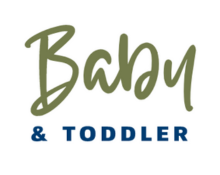
The ideal breastfeeding position may vary depending on the mother and baby’s preferences, comfort, and individual circumstances. Here are some commonly recommended breastfeeding positions:
Cradle Hold: In the cradle hold, the baby lies on their side facing the mother’s chest. The mother supports the baby’s head with the crook of her arm, using the same arm as the breast she is nursing from. The baby’s body rests in the mother’s lap, and their mouth is aligned with the nipple for latching.

Cross-Cradle Hold: The cross-cradle hold is similar to the cradle hold, but the mother uses the opposite arm to support the baby’s head. This position provides more control and support for the baby during latching and is often helpful for newborns or babies who need extra support.

Football Hold: In the football hold, the baby’s body is positioned at the mother’s side, tucked under her arm, with their legs pointing toward her back. The baby’s head is supported by the mother’s hand or a pillow, and their mouth is aligned with the nipple for latching. This position is useful for mothers who had a cesarean birth, for mothers with larger breasts, or for babies who struggle with latching.

Side-Lying Position: The side-lying position involves the mother lying on her side with her upper body slightly propped up. The baby lies on their side facing the mother’s body, and they can latch onto the breast from this position. This position is particularly beneficial for nighttime feedings or when the mother needs to rest while breastfeeding.

Laid-Back or Biological Nurturing Position: In this position, the mother reclines comfortably, semi-reclined, or on her back. The baby is placed on the mother’s chest facing downward, with their body against the mother’s body. This position allows the baby to use their natural reflexes to find and latch onto the breast.

It’s important to ensure that both the mother and baby are comfortable, with good alignment and support.
Remember, each mother-baby is unique, and finding the most comfortable position may require some trial and error. Consulting with a lactation consultant can provide personalized guidance and support to help you find the best breastfeeding position for you and your baby.
